Things are moving along in the course. Week 5 started off with another cancelled field trip due to weather. But, as I’m learning with this course, we adapted and instead spent time trouble shooting R. None of the students have ever used R, so it was a lot to ask of them. I made a simple code for them to get displacement, velocity, and acceleration from the point they digitized on their video in MTrackJ. There is a learning curve to R, so we spent the first part of Monday’s class making sure everyone can run their point through and get some data. And we did. I also asked them to get mean velocity and acceleration, not giving them the code, but pointing them to online resources.
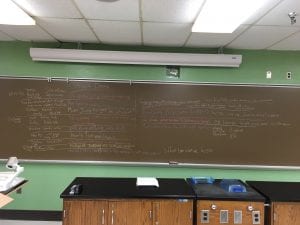 Students then went back out to the Glenn Arboretum to collect some invertebrates with Aaron and Jess. They came back with a bunch of organisms. Instead of filming, I wanted to give them time to talk about project ideas. So, I had them brainstorm. We wrote all the ideas on the board and started thinking about experimental design, sample sizes, and feasibility. They had an assignment due the next Monday on an initial project idea with citation. Starting to move from learning about animal movement and research to conducting research. In class on Wed. we had a lecture on jumping and discussed a paper on hindlimb length and jumping in leafhoppers.
Students then went back out to the Glenn Arboretum to collect some invertebrates with Aaron and Jess. They came back with a bunch of organisms. Instead of filming, I wanted to give them time to talk about project ideas. So, I had them brainstorm. We wrote all the ideas on the board and started thinking about experimental design, sample sizes, and feasibility. They had an assignment due the next Monday on an initial project idea with citation. Starting to move from learning about animal movement and research to conducting research. In class on Wed. we had a lecture on jumping and discussed a paper on hindlimb length and jumping in leafhoppers.
Week 6 began with weather finally on our side! So, we headed out to Oregon Ridge Park to try and collect. Students had submitted initial project ideas, so we had some target species. Many students went with Jess to catch crayfish in a creek, and they were successful, capturing ~23 in an hour. I went with several students to sample the fields, and we got some crickets and grasshoppers. Students in the creek also realized there were water striders, so they caught a bunch of them. We then sat in the pavilion and students rotated around discussing project ideas, while Aaron and Jess caught all the invasive stink bugs on the pavilion. We started to organize into groups and project ideas. Seemed there was a group that wanted to work with crayfish, a group wanting to work with water striders, another on crickets/grasshoppers and one that was open. We headed back to campus, Aaron and Jess took care of our new animals.
On Wed. we spent the first few minutes finalizing groups. They have a proposal abstract due next week, as a group. We are switching over to more group work now. We then discussed movement in the air and read a paper on bee flight performance. We’re suppose to head back to Oregon Ridge on Monday to target grasshoppers and crickets, and our midterm on Wed. Then, it is all about research.

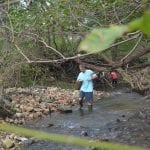

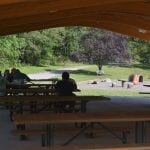
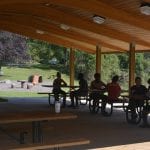
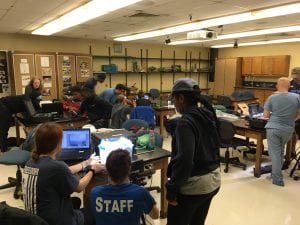 A quarter of the way through the semester. Weather has not been on our side. For week 3 we spent our time in lab practicing to film using some of the crayfish we had. Everyone got some crayfish escapes. We then moved to the computer lab to learn digitizing using the MTrackJ plugin for ImageJ. We used one of the praying mantis videos I had, and after we worked through the protocol, students started clicking (and clicking and clicking and clicking). They had an assignment due at the start of the next lab day tracking one point from one of the crayfish videos. Digitized points were graded based on this
A quarter of the way through the semester. Weather has not been on our side. For week 3 we spent our time in lab practicing to film using some of the crayfish we had. Everyone got some crayfish escapes. We then moved to the computer lab to learn digitizing using the MTrackJ plugin for ImageJ. We used one of the praying mantis videos I had, and after we worked through the protocol, students started clicking (and clicking and clicking and clicking). They had an assignment due at the start of the next lab day tracking one point from one of the crayfish videos. Digitized points were graded based on this 
 . We spent Monday going over logistics of the course, introductions of the class, some basic camera principles, and then got into filming. Every student held a hissing cockroach (good for an organismal course), and every student captured a high speed video of something moving. The video was part of their first assignment, worth 5 points and based off the following rubric I created to ensure they understand what makes a good video for analysis (
. We spent Monday going over logistics of the course, introductions of the class, some basic camera principles, and then got into filming. Every student held a hissing cockroach (good for an organismal course), and every student captured a high speed video of something moving. The video was part of their first assignment, worth 5 points and based off the following rubric I created to ensure they understand what makes a good video for analysis (